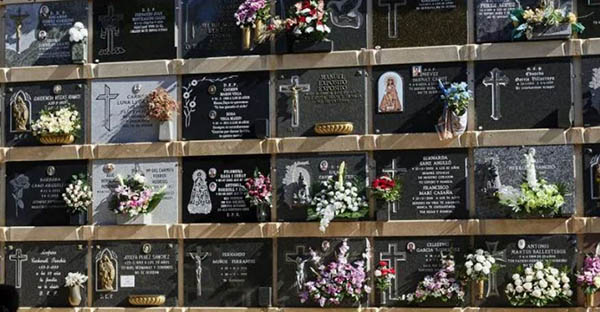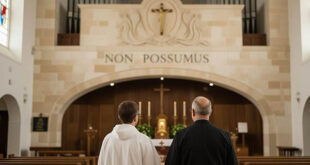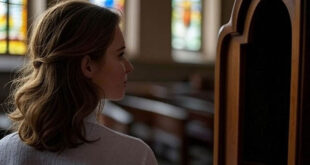Death is a profound mystery that stirs a mix of emotions and questions within us about the afterlife, the meaning of life, and how we should say goodbye to our loved ones. In the midst of this pain, the Catholic Church offers clear and meaningful guidelines to help the faithful honor the deceased from a perspective of faith and hope in the resurrection. In this article, we will explore the Church’s guidance on burials, cremation, and the proper treatment of ashes.
These guidelines are not merely rules but spiritual guides that help us recognize the dignity of the human person and the Christian hope of eternal life. Let’s walk together through this journey to understand the deep meaning of these rites and how to apply them in our daily lives.
1. The Christian View of Death and Resurrection
For a believer, death is not a definitive end but a passage toward a full life in communion with God. Christian doctrine holds that, at the end of time, all the dead will rise, and this earthly body—though transformed—will be part of our eternal identity. This is the foundation of the Church’s teachings on respecting and caring for the body after death. In Catholic faith, the body is a temple of the Holy Spirit (1 Corinthians 6:19) and a tangible sign of our identity and dignity, deserving special treatment even after passing away.
2. Burial as a Traditional Practice
The tradition of burial has, for centuries, been the Church’s preferred way of bidding farewell to the faithful. The early Christians buried their dead in catacombs, not only as a practical necessity but also as an affirmation of their faith in the resurrection. For them, burial was a way to express that the body, as God’s work, should rest intact until the time of resurrection.
Burial symbolizes an active and hopeful waiting, and this form of body disposition provides the faithful, friends, and family with a physical place to remember and pray. This is why the Church continues to encourage burial in cemeteries, as a respectful act toward the body and a visible sign of hope in eternal life.
3. Cremation: An Allowed Alternative, But with Conditions
With time and cultural changes, cremation has grown in popularity in many societies. Although the Church has always preferred burial, it has allowed cremation since 1963, provided that this practice does not contradict faith in the resurrection of the dead. This acceptance of cremation is based on the understanding that the soul is immortal and that, ultimately, God can resurrect the dead regardless of the body’s physical state.
However, the Church states that ashes must be treated with the same respect as the body. This means that ashes should remain together and be buried or placed in a sacred location, such as a cemetery or church. The Church strongly discourages practices like keeping ashes at home, scattering them in nature, or turning them into objects like jewelry or keepsakes. These practices are deemed inappropriate because they can lead to a loss of respect for the deceased and diminish reverence for the mystery of death and resurrection.
4. Why the Church Discourages the Scattering of Ashes
The scattering of ashes in the sea, in the mountains, or in other locations has become popular in some cultures. However, the Catholic Church firmly discourages this practice, as it believes that it does not adequately reflect the dignity of the body or the hope in resurrection. Scattering ashes can dilute the sense of identity and permanence, essential aspects of the Christian concept of the afterlife.
Pope Francis, in the document Ad resurgendum cum Christo (2016), explained that keeping ashes in a sacred place helps remember the deceased and promotes prayer for their soul. By being placed in a cemetery or religious site, the ashes can be honored in a dedicated space, allowing relatives to have a reference point for remembrance and prayer.
5. The Spirituality of Grief and the Value of Funeral Rites
The grieving process is a complex experience that can find relief and comfort in funeral rites. For Catholics, the funeral is not only an act of farewell but also a liturgy of hope, where the community accompanies the family and entrusts the soul of the deceased to God’s mercy. Rites such as the wake, the funeral Mass, and the burial provide meaningful moments to reflect on faith and God’s love.
These rites allow the community and the family to gather, strengthen each other in faith, and find comfort in the promise of eternal life. The funeral Mass is particularly a moment of great spiritual significance, as it unites the community in prayer for the soul of the deceased, asking God to grant them eternal peace.
6. Practical Advice for the Faithful and Their Families
Understanding the Church’s guidelines on burial, cremation, and ashes can help the faithful and their families make decisions in harmony with their faith:
- Plan Ahead: Many people find comfort in expressing their funeral wishes while alive. Talking openly with family members and with the parish priest about options and preferences can make planning easier and ensure that Church teachings are respected.
- Choose Sacred Places: Whether for burial or the placement of ashes, choosing a cemetery or columbarium in a church ensures that the location has the respect and sacredness that the remains of a loved one deserve.
- Encourage Prayer and Remembrance: Having a sacred place where family members can gather to pray and remember the deceased is important for the grieving process and allows the memory and love for that person to remain alive.
- Avoid Non-Recommended Practices: The Church asks the faithful to avoid practices that may dilute respect for the deceased, such as scattering ashes or using them in mementos. Instead, it encourages the faithful to keep ashes in a place that facilitates prayer and reverence.
7. Final Reflection: An Act of Faith and Hope
For believers, the moment of death is an opportunity to reaffirm faith in eternal life. The Church’s guidelines on burial, cremation, and ashes are not merely norms but expressions of a profound spirituality that seeks to honor human dignity and hope in resurrection. By following these guidelines, Catholics not only respect their loved ones but also bear witness to their faith in God’s power to give new life to what has perished.
May these teachings inspire in each of us a renewed love and respect for the human body and a living hope in eternal life. In a world that sometimes views death as the final absolute, the Church reminds us that, for God, death is just the beginning of a life fulfilled in His presence.







2 comments
Pingback: Cremation or Embalming and the Christian - SOUNDLIVING
Pingback: Embalming and Cremation and the Christian - SOUNDLIVING